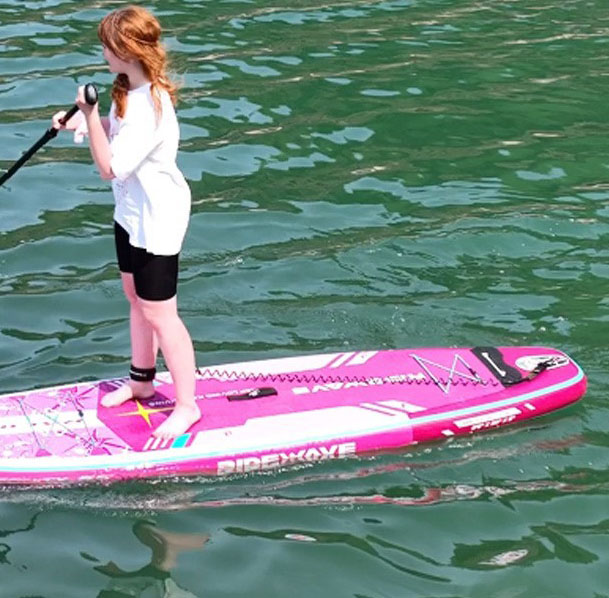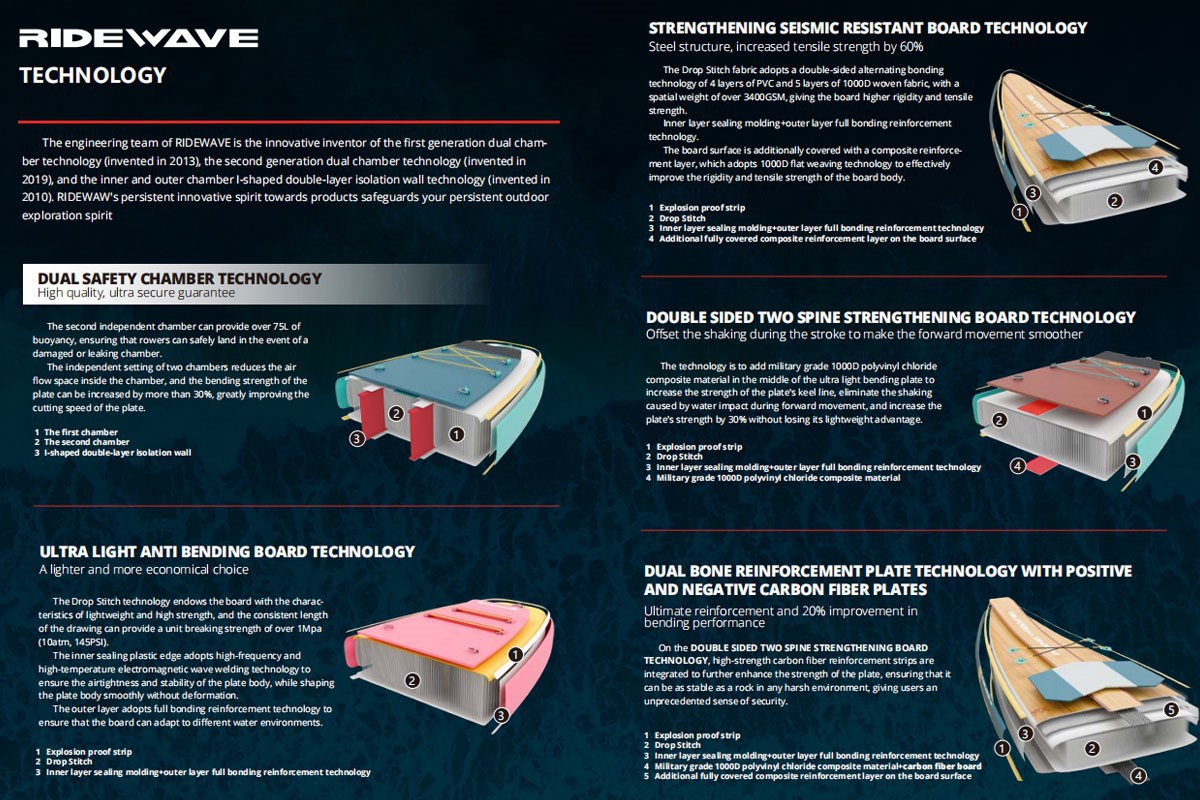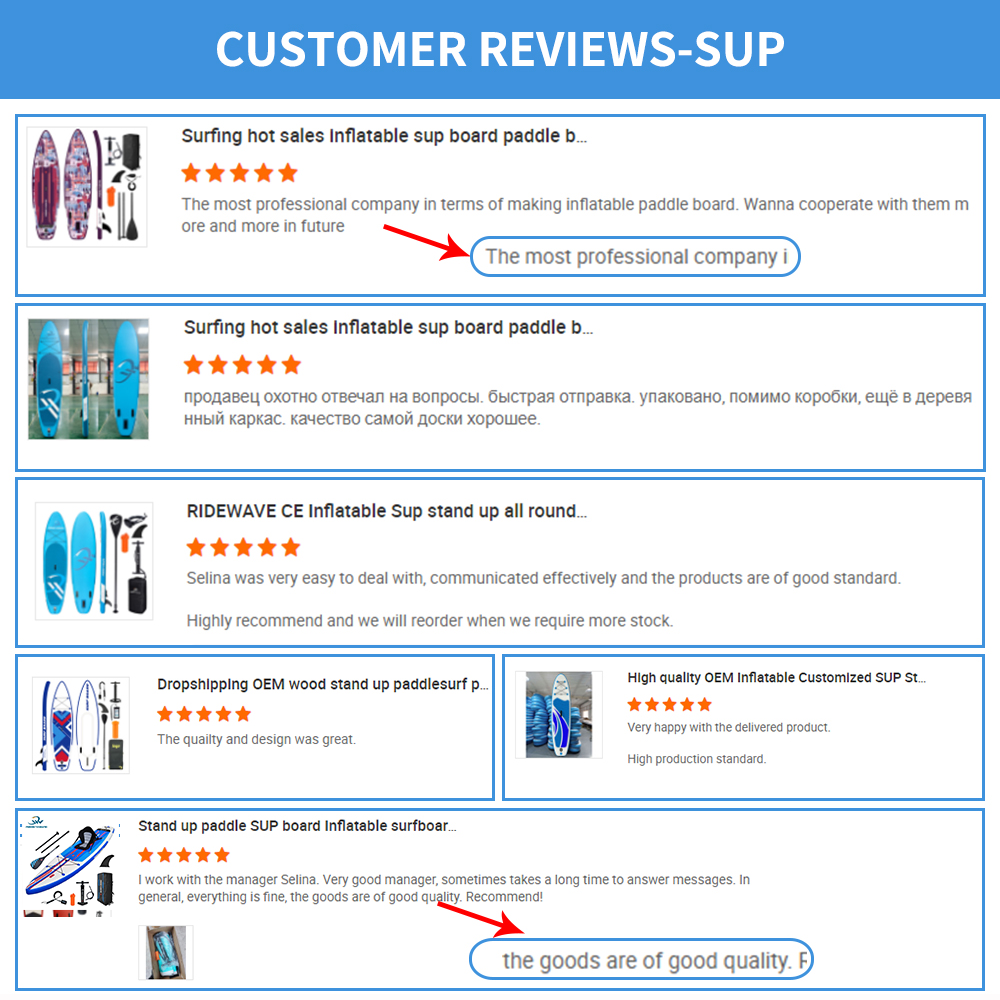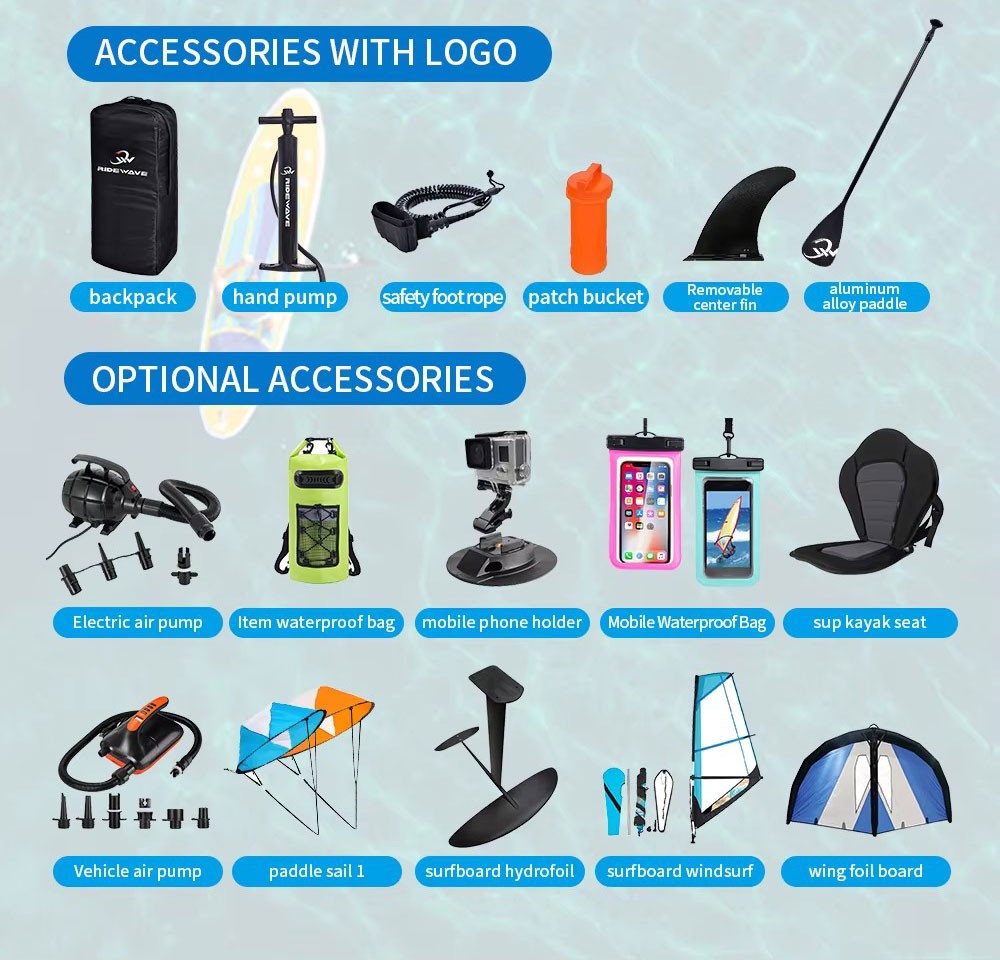The Paddle Board Buyer’s Handbook For International Distributors Part 1
Jun 25, 2025
Leave a message
The global stand-up paddle board (SUP) market is expanding rapidly as more consumers across continents embrace water sports for recreation, wellness, and eco-tourism. Whether it's paddling along the canals of Amsterdam, the beaches of Australia, or remote lakes in Canada, the demand for SUPs is on the rise.
For international distributors, this represents not just a seasonal sales window-but a strategic opportunity to establish long-term brand presence. However, success in this competitive landscape depends on a deep understanding of the market, careful manufacturer selection, smart product planning, and value-driven branding.
This guide is designed for B2B buyers and distribution businesses looking to grow their market share in the paddle board industry. Let's break down the key considerations that will help you thrive globally.
Global Market Trends for Paddle Boards
The global paddle board market is expected to surpass USD 3.2 billion by 2027, driven by increased leisure spending and outdoor activity participation. Here's a breakdown of regional trends:
North America: Still the leading market. SUPs are popular in states like California, Florida, and Colorado. Consumers prefer touring and all-around models, especially in rental or lakefront businesses.
Europe: High interest in Germany, France, and the UK, particularly around lakes and coasts. Distributors targeting resorts and water sports retailers see steady returns.
Asia-Pacific: Australia leads, followed by Japan and Thailand. Lightweight and compact inflatable boards perform well due to smaller storage spaces.
South America & Africa: Still early-stage markets but with strong growth potential, especially in Brazil and South Africa. Price-sensitive buyers often look for value-focused bundles.
Understanding the Inflatable vs. Hard Board Debate
When choosing product lines to import or distribute, one of the first decisions is between inflatable and hard boards.
Inflatable SUPs (iSUPs):
Easy to pack, ship, and store
Lightweight for urban or travel users
Suitable for rentals, tours, and retail
More forgiving in impact situations, making them beginner-friendly
Hard Boards:
Preferred by professionals or surfers due to better responsiveness
Better suited for coastal rentals or performance shops
Require significant shipping precautions (crating, padding)
Ridewave Tip: All Ridewave iSUPs are constructed with dual-layer military-grade PVC and reinforced rails, offering the stiffness of hard boards with the portability of inflatables.
Choosing a Manufacturer: What to Look For
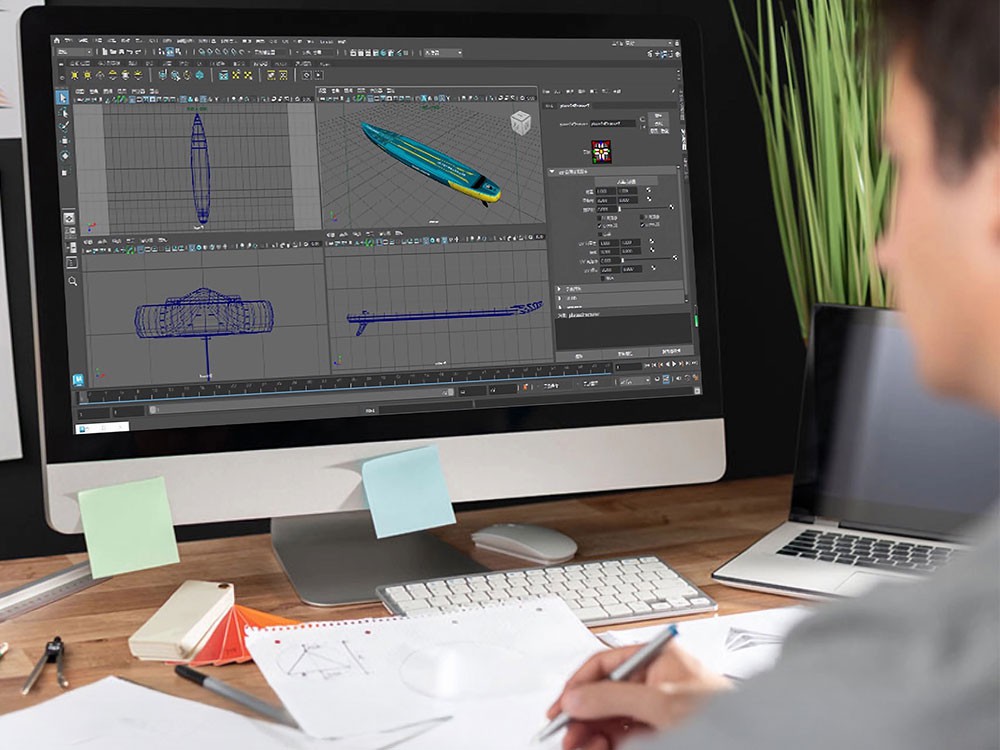
With hundreds of board factories (mostly based in China and Vietnam), it's crucial to evaluate not just the catalog but the core capabilities of a manufacturer:
Production Scale: Can they handle your volume reliably through peak seasons?
Materials Used: Are they using woven drop-stitch core, UV-resistant coatings, strong adhesives?
Communication: Do they provide timely responses and transparent updates?
ODM/OEM Services: Can they support either your private label or a fully custom design?
Ridewave Advantage: Ridewave's factory includes a CAD design center, independent QC team, and automated lamination lines-ensuring both speed and quality.
Asia-Pacific: Australia leads, followed by Japan and Thailand. Lightweight and compact inflatable boards perform well due to smaller storage spaces.
South America & Africa: Still early-stage markets but with strong growth potential, especially in Brazil and South Africa. Price-sensitive buyers often look for value-focused bundles.
Certifications, Compliance & Legal Readiness
Each market has its own safety, labeling, and documentation requirements:
CE Marking: Required for most European Union member countries
ASTM Standards: Frequently needed for the United States, especially for retailers like Walmart or Amazon
REACH & CPSIA: Chemical safety and product safety declarations
Import Documents: Bill of lading, FTA certificates, packing lists, test reports
Ridewave Note: All Ridewave boards come with CE certification and REACH compliance documents by default. Additional region-specific testing can be arranged.
Minimum Order Quantities (MOQs) & Testing New Markets
For international distributors, managing risk is crucial when entering a new region or launching a fresh product line. One effective way to reduce this risk is by working with manufacturers that offer low Minimum Order Quantities (MOQs).
Why Low MOQs Matter:
Test the Waters: You can introduce products into select cities or pilot stores without overcommitting inventory.
Seasonal Flexibility: Run limited editions or time-sensitive promotions (e.g., summer-only prints).
Brand Launches: Start small to validate branding, pricing, and packaging strategies.
Many manufacturers demand high MOQs to ensure production efficiency, but this often locks small or mid-sized distributors out of the market. That's why flexibility from your supplier is a huge advantage.
Ridewave Support: With MOQs starting from just 30 units per design for selected models, Ridewave helps you reduce financial pressure and speed up time-to-market. You can even mix sizes or deck pad colors within the same batch.
Tips for First Orders:
Order multiple SKUs in small quantities to see what sells fastest
Collect customer feedback from test sales before bulk reordering
Bundle early runs with premium accessories to maximize appeal
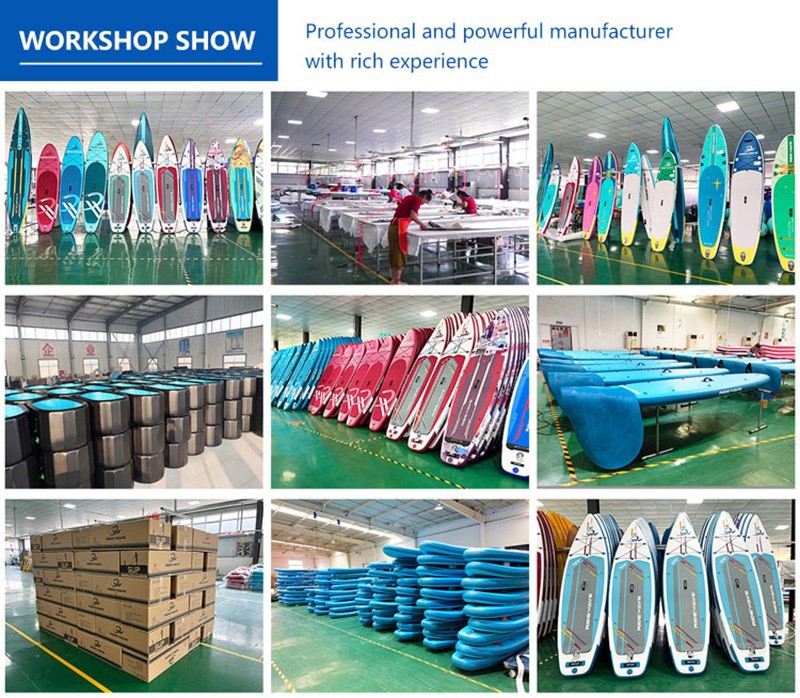
Customization Options: Building a Standout Brand
In a competitive paddle board market, customization is the difference between a commodity product and a branded experience. Your board design, color scheme, and packaging all contribute to brand identity and consumer loyalty.
Key Areas of Customization:
Board Colors & Print Design: Choose bold or minimalist designs based on your brand voice
Deck Pad Material & Shape: Offer unique feel, traction, or logo-embossed designs
Logo Placement: Put your logo on the nose, tail, or deck pad in full color
Board Shape Customization: Tailor volume and dimensions to your target customer (e.g., shorter boards for youth markets)
Beyond the board itself, packaging and included accessories play a key role in your brand's perceived value.
Branded Packaging Inclusions:
Custom box artwork
QR code inserts linking to tutorial videos
Instruction manuals with your company's branding
Optional barcode printing for retail shelves
Ridewave Special: Ridewave provides a dedicated in-house branding team and proprietary 3D design tool that lets you view your customized board and packaging in real-time before production. This avoids costly mistakes and speeds up approval.
Accessory Strategy: Add Value to Your SUP Package
Offering the right accessories isn't just about functionality-it's about creating a complete, premium experience for the end customer. A high-quality accessory kit can justify a higher price point and lead to better reviews and repeat purchases.
Must-Have Accessories:
3-Piece Carbon Fiber Paddle: Adjustable, lightweight, and floats in water. Perfect for both casual and advanced users.
Double-Action Pump: Allows for faster and easier inflation with integrated PSI gauge.
Coiled Safety Leash: Keeps users connected to the board in all conditions.
Premium Travel Backpack: Reinforced zippers, comfortable straps, and extra space for accessories.
Waterproof Repair Kit: Compact, with patches and valve wrench included.
Why Accessories Matter:
Boosts perceived value of your product
Encourages brand loyalty when accessories carry your logo
Increases revenue if sold separately or offered in bundles
Ridewave Standard: All OEM Ridewave boards come with a full accessory set, which can be branded with your company's logo and color theme. Each item is tested for durability and functionality before shipping.
Related Blogs You Might Also Like
To further enhance your understanding and strategy, check out these expert resources:
1.The Ultimate Guide To Choosing And Selling Inflatable Paddle Boards in 2025
A comprehensive guide covering how to select, market, and sell inflatable paddle boards with proven B2B strategie
2.What Types Of Inflatable Paddle Boards Are Trending in 2025?
Explore the top SUP design trends, materials, and features shaping buyer demand and product innovation in 2025.
3.How To Choose The Right Paddle Board Size For Every Type Of Customer
This guide helps you match paddle board dimensions to different rider profiles for optimal stability and performance.
4.Top Features B2B Buyers Should Look For in A Paddle Boards Manufacturer
Learn which key features-like quality control, OEM services, and logistics-are essential when sourcing from a SUP factory.
5.Top SUP Manufacturer From China
– Learn why Ridewave is the supplier of choice for global businesses.


